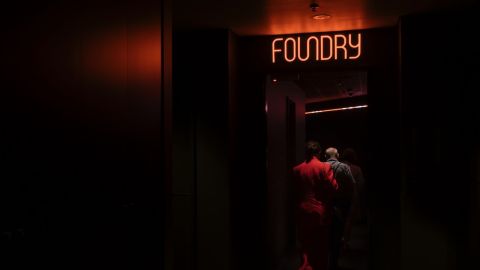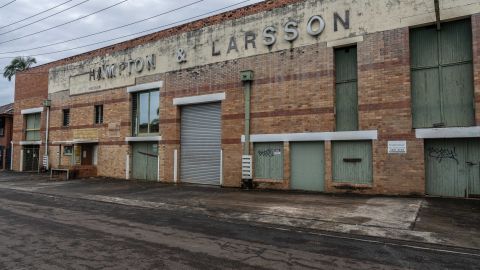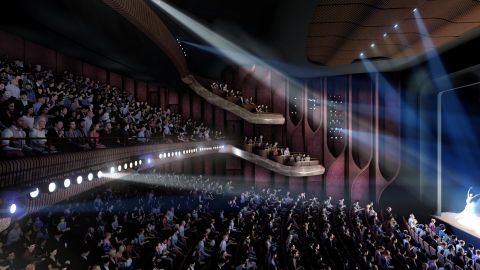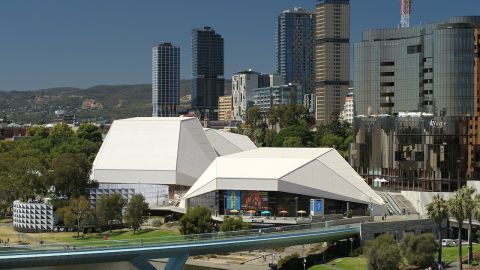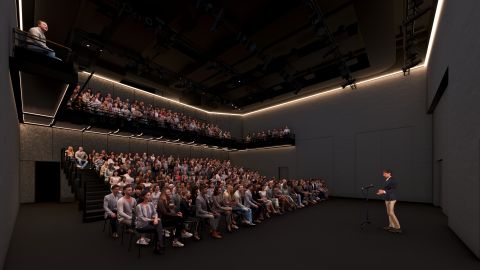FIRE, FLOOD and DEMOLITION PLAN CAN’T KILL SARATON THEATRE

On the north coast of New South Wales an historic theatre has been restored to its former glory despite many brushes with death. The Saraton Theatre in Grafton has been lovingly refurbished and is now available for hire for live theatre or concerts.
If only the walls could talk. The Saraton Theatre would have many yarns to spin. Work on building the theatre began in 1925 by two young Greek immigrant brothers Ionnis and Anthony Notaras. Even building the theatre was a drama.
“There were no cranes available so they used the same technology as building the 2500-year-old Parthenon in Athens,” Angelo Notaras (son of Anthony) recounts.
“Lifting and moving the huge steel beams in those days was a hell of a job,” he said.
But despite the challenges of sourcing material as far away in Sydney it opened in July 1926 and has remained in the same family ever since.

Indeed the name Saraton is the family surname spelt backwards.
The theatre’s main function has always been as a cinema, but the owners have now upgraded facilities to allow touring producers to stage live performances in the two tier 1250 seat venue, which has now been reduced to 950 seats for added comfort.
To give it flexibility, the venue now has a roll up/roll down screen, dressing rooms, and the capacity for future stage extensions.
The Saraton has already hosted The McClymonts, with a capacity crowd of 950, as well as successful nights with John Williamson, Leo Sayer, Sydney Youth Orchestra, The Watoto Choir from South Africa, school functions and other entertainments.
Forthcoming attractions include Troy Casser Daley, Mick Flavin, The Comedy Company and many more.
The theatre might easily not have made it. In 1932 the Saraton experienced the first of three fires. The damage to the screen, curtain, roof and flooring was so extensive the building was shut during the depression years. It was renovated and re-opened in 1940.
The auditorium was described at the time as having "a rectangular proscenium opening, crowned by stepped fluted panelling in gold, decorated with modern mouldings. There were large wall friezes along the auditorium walls, featuring oval patterns.”
The newly refurbished cinema even had a visit from the Prime Minister of the day, who applauded the venture as a means of keeping up the spirit of Australians in war time.

The Saraton had its own dark time during World War 2 when it was damaged by fire in 1944. This time it bounced back in a few months.
More challenging was the great Grafton flood of 1950. The building was inundated, completely covering the lower level of seating.
Over the following decades the Saraton opened and shut several times. An employee was charged with lighting the third fire in 1989, which started in the projection box.
It was during this era that the pattern emerged of tearing down these types of buildings. Indeed of the hundreds of historic cinemas built in the 20th century, in country towns only a handful have survived, with The Saraton being the largest and oldest to survive in original condition.
In 1999 the Notaras family decided it was time to sell up. A plan was developed to turn the land into a car park. But their timing was ordinary.
"(The news) that The Saraton was to be demolished was published in the local newspaper on a Tuesday during heritage week in Grafton when Hazel Hawke (the ex-wife of former Labor prime minister Bob Hawke) was the chairwoman of the heritage council visiting Grafton," said Angelo Notaras."
By 1.30pm that afternoon there was a permanent heritage order placed on the theatre.”

"We were stuck with it. We tried to sell it to the local council for $1, including four shops and land and they refused to accept and we had no choice then but to think about how to redevelop it."
The family paced the development of the theatre with the introduction and arrival of digital cinema and spent more than $4 million on the revamp, including the addition of two new ‘state of the art’ cinemas.
Now the family is delighted they were ‘forced’ to keep the theatre, and heritage officials are delighted with the result.
Last year the Notaras brothers were honoured at the National Trust (Aust) NSW Section Awards, taking out the best heritage restoration award in a building over one million dollars.
"We're very happy we did the job, it was a huge job," Mr Notaras said.
Instead of a carpark, the good folk of Grafton can enjoy watching films or live entertainment in what has been described as one of the most decorative and architecturally handsome theatres in NSW.
Land has been set aside at the rear of the stage for extensions when funds become available. A 300+ council car park adjoins the rear of the theatre, which is strategically located in the centre of the city of Grafton.
Originally published in the March / April 2012 edition of Stage Whispers.

